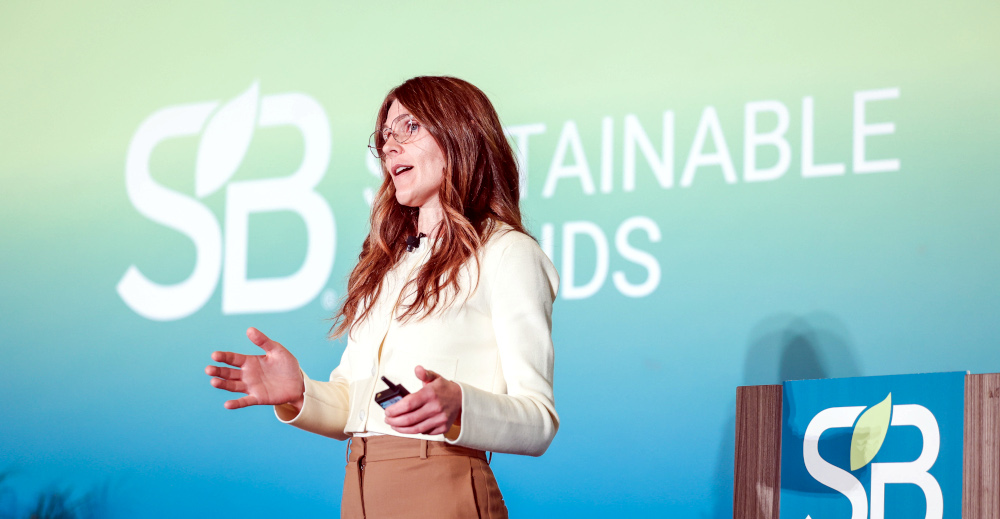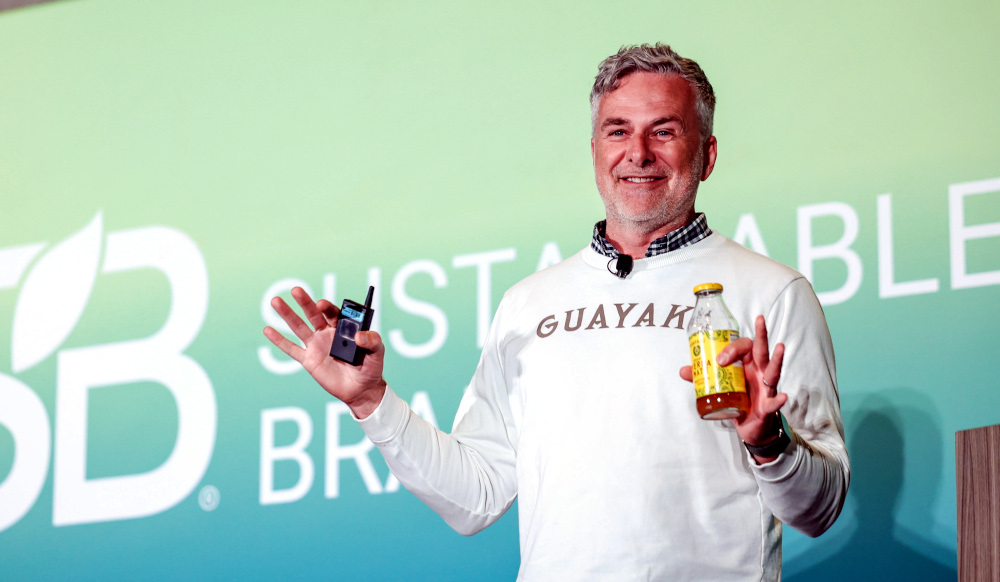The rise of complementary proteins diversifying meals manufacturing
 Image credit score rating: Plantible Meals
Image credit score rating: Plantible Meals
Addressing the environmental and social impacts of enterprise agriculture has
develop to be important as world meat consumption continues to rise. Industrial animal
agriculture emits further greenhouse gases than all of the transportation sector
combined and contributes to native climate change, biodiversity loss and meals
insecurity.
A Tuesday afternoon panel, moderated by Marika
Azoff — Firm Engagement Lead at
the Good Meals Institute — convened innovators from cultivated,
fermentation-derived and plant-based protein startups creating sustainable
choices to meet rising protein demand with out further harming the
setting.
There are at current over 1,500 companies engaged on complementary proteins and
merchandise, in search of to create further protein decisions for patrons. One amongst these is
San Diego-based Plantible Meals, whose
contribution to reshaping agriculture comes from lemna (aka
duckweed)
— a tiny, high-protein, aquatic plant that comes with all 9 necessary amino acids,
doubles in measurement every 40 hours, requires minimal sources (10x a lot much less water than
soybeans [almost 100x less than beef] and makes use of zero arable land, in accordance with
Plantible’s site), and absorbs 10x further CO2 than a healthful forest. The
agency extracts lemna’s protein to produce Rubi
Protein™ — which the company says
moreover emits significantly a lot much less greenhouse gasoline than customary, animal-based
protein sources.
“Rubi may be utilized in a wide range of features — throughout the plant and meat space,
along with the cosmetics space,” talked about Plantible co-founder Tony
Martens.
Within the meantime, Sacramento’s The Greater Meat Co
champions mycelium protein as a sustainable completely different to animal protein.
In distinction to standard meat manufacturing — which is extended, helpful useful resource intensive and
polluting — mycelium can be grown and harvested in merely 20 hours, making it
extraordinarily atmosphere pleasant. As Principal Plant Engineer Jacqueline
Samson outlined,
mycelium-based
proteins
present a whole-food methodology — preserving priceless nutritional vitamins and producing a lot much less
waste with out the need for classy protein-isolation processes.
“Our components go into any type of packaged gadgets that you might discover on the
grocery retailer,” she talked about. “It’s moreover an ingredient which may be hybridized with
meat
merchandise
on account of the reality that it has neutral style and coloration, and a meat-like texture.”
Whereas these enhancements current promise, scaling these utilized sciences is essential. If
completely different proteins normally aren’t cheap and scalable (along with delicious),
their optimistic affect on sustainability will keep restricted. Israel’s Aleph
Farms is on a mission to interchange your complete
cow
by the use of cellular
agriculture,
which lab-grows meat straight from animal cells. Together with liberating up
considerable land and water sources, cultivated beef manufacturing eliminates
methane
emissions
— a big revenue over customary beef farming.
“We have to enchantment to essentially the most people as doable,” talked about Nicky
Quinn, Aleph’s VP of Promoting. “We
must have delicious merchandise that people must eat.”
The journey to mainstream adoption of these novel
proteins
contains partaking every corporations and clients. Plantible Meals’ and The Greater
Meat Co’s decisions are primarily centered on B2B markets — providing components
for plant-based and hybrid meat merchandise, along with non-food merchandise. These
partnerships are necessary to introducing novel proteins into acquainted merchandise,
making the transition smoother for patrons. Educating the
public
on the environmental and properly being benefits of different proteins may also be important
to reaching widespread acceptance.
“I identify it aesthetic activism,” Quinn talked about. “Making an attempt to make the suitable points
cool and delicious by the use of the flexibility of storytelling and experiences to
persuade people to make greater
decisions.”
As the selection protein enterprise advances, securing capital and growing
manufacturing capabilities are key milestones. The need for funding, strategic
partnerships and authorities help to assemble commercial-scale facilities and
drive innovation will in all probability be key in cultivating the widespread shifts in consuming
habits obligatory to help future-proof our meals system.
The theme of food-system change, with an emphasis on regenerative agriculture,
carried by the use of numerous keynotes on the final word day.
Unlocking shopper demand for regenerative agriculture
 Kristine Root
Kristine Root
Kristine Root, Chief Promoting
Officer at regenerative ag certifier Regenified,
examined the sphere from a shopper demand perspective. She shared the findings
of a Regenified analysis that assessed shopper curiosity in regenerative
agriculture and values-based shopping for — which found that whereas solely 12 p.c
of the US inhabitants wouldn’t care about deeper values when making purchases, 88
p.c are pushed by better than type, value and mannequin. A subset of these
values-based clients aligns with the guidelines of regenerative
agriculture
— with 68 p.c of primary clients, 86 p.c of value-based clients, and
94 p.c of regenerative clients supporting regenerative merchandise. Consciousness
of regenerative
agriculture
has grown rapidly, doubling beforehand 12 months on account of points along with
documentaries and media safety. Regenified’s evaluation signifies that
‘regenerative clients’ are to not be underestimated — they symbolize 20
p.c of the inhabitants and are extraordinarily motivated; 89 p.c will exit of
their strategy to purchase regeneratively grown merchandise and 92 p.c want
certification. “The regenerative clients are further engaged, further educated, and
further motivated to take movement,” Root asserted. “These are the people entrepreneurs
ought to wish to mobilize.”
Nonetheless, 40 p.c of value-based and 44 p.c of regen clients say they
wrestle to hunt out these merchandise. Addressing this barrier by highlighting
regenerative-ag practices as a
differentiator
isn’t going to solely drive mannequin reputation and revenues nevertheless foster a further resilient
meals
system.
Check out further highlights from all by means of the week at SB’24 San Diego!
How one can reframe your mannequin as a lifestyle choice whereas remaining true to your mission and values
 Ben Mand
Ben Mand
Ben Mand, CEO of Guayakí Yerba
Mate, shared additional insights on making a mannequin further worthwhile
by aligning goal with product. Yerba Mate, a caffeinated plant beloved
for a whole bunch of years in South America, serves as a result of the core of Guayakí’s
mission-driven enterprise — which started in 1996. Mand argued that whereas kind is
easy to advertise, lasting mannequin success comes from having a clear goal that
resonates with clients. He believes producers, like people, should be
multidimensional — balancing sustainability with authenticity. Guayakí’s recipe
for achievement can be utilized to any mannequin trying to point up as a lifestyle mannequin:
fostering actual connections with communities, resisting traits that compromise
the mannequin’s values, and staying true to its goal of enhancing the
setting.
“Arrange your foundation and authenticity sooner than you cope with kind,” Mand
recommended. “You’ll be humorous or irrespective of you want, as long as it is true to you as
a mannequin.”
The Walmart + PepsiCo model for championing regenerative agriculture
 Mikel Hancock and Margaret Henry
Mikel Hancock and Margaret Henry
Subsequent, Margaret Henry, VP
of Sustainable and Regenerative Agriculture at
PepsiCo; Dan
Yeoman, Managing Director of the
Soil and Water Outcomes Fund; and Mikel
Hancock, Senior Director
of Sustainable Meals and Agriculture for Walmart,
shared courses found from the two meals giants’ ongoing collaboration to scale
regenerative
agriculture
all through their shared North American present chains. The three companions emphasised
the importance of collaboration between companies, farmers and exterior
stakeholders — exemplified of their Midwest Row Crop
Collaborative. Courses found up to now embody:
Scaling efforts and making a resilient present chain hinge on aligning inside
enterprise targets with sustainable farming practices; farmers need help by the use of
hazard low cost and long-term funding; and exterior companions, along with
governments and NGOs, are key to important impacts. A key drawback is making
regenerative practices associated and accessible to farmers and clients whereas
guaranteeing future progress by the use of collaboration and shared imaginative and prescient.
“You have to have humble conversations with all people throughout the room,” Hancock talked about.
“Within the occasion you stop, hear, current assist and uncover a shared goal; you could get
momentum really fast.”
Preserving rice for generations to return
 L-R: Kristen Campos and Hallie Shoffner
L-R: Kristen Campos and Hallie Shoffner
Collaboration with farmers may also be central to Mars’
partnership with rice producer Delta Harvest.
Kristen Campos, VP of
Firm Affairs at Mars, and Delta Harvest Farmer-CEO Hallie
Shoffner talked about how their
collaboration has led to evaluation and learnings advancing water conservation in
US rice farming. Mars, producer of Ben’s
Genuine — certainly one of many world’s hottest
rice producers — partnered with Shoffner and her workforce of various women and minority
farmers to find strategies to cut water use and greenhouse gasoline emissions from
producing rice, a crop that feeds 4 billion people globally nevertheless consumes big
portions of water and contributes to 1.5 p.c of world GHG emissions.
Collectively, they’re working with the USDA to scale practices along with
alternate wetting and
drying
and numerous inlet
irrigation
to cut water use and methane emissions, and promote financial incentives and
collaboration to make these practices worthwhile and scalable for farmers.
“It’s not straightforward; every farm is totally completely different, and every comply with has execs and
cons,” Shoffner talked about. “We would like an monetary system that funds evaluation and
incentivizes on-farm implementation.”



